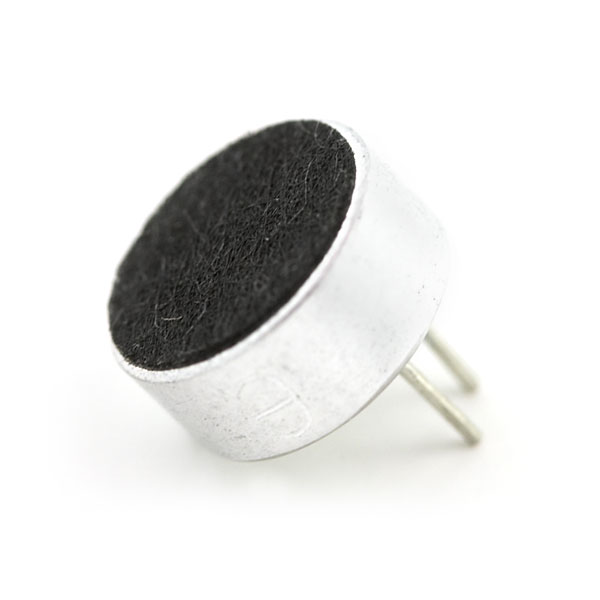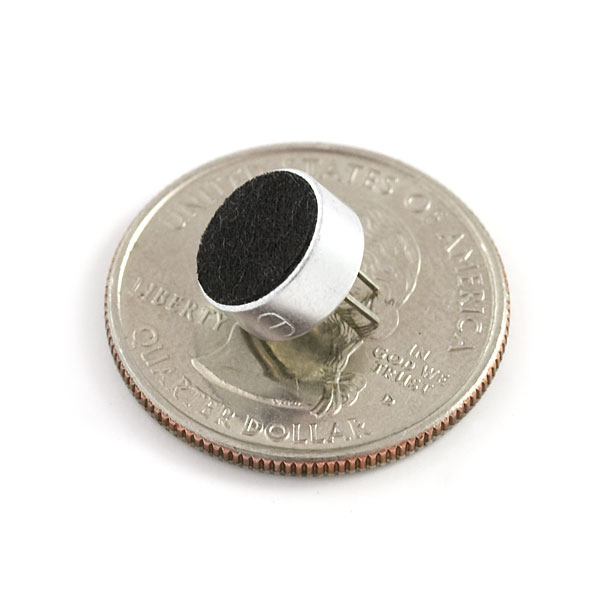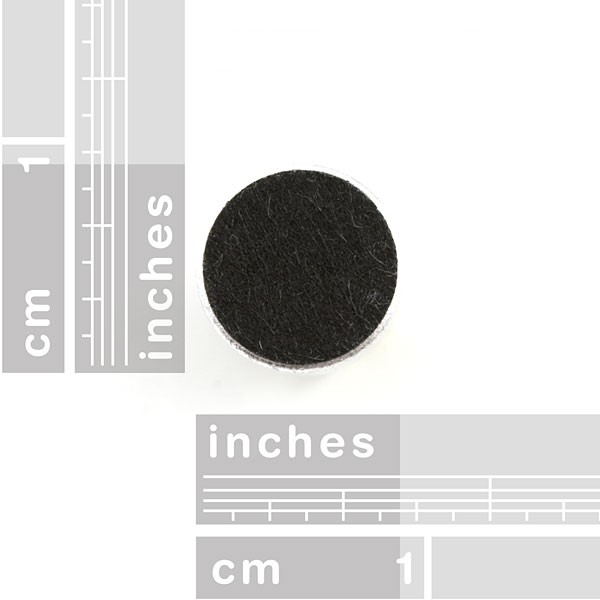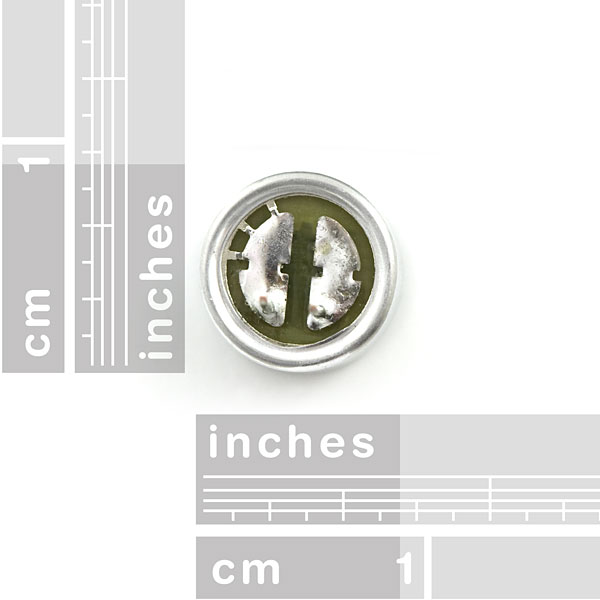Small electret microphone. Useful in acoustic and audio applications.
- Datasheet
- Example Audio LED control project by Adam Greig
Electret Microphone Product Help and Resources
Vox Imperium: Stormtrooper Voice Changer
October 25, 2016
Add some flair to your Imperial uniform by changing your voice using a Teensy 3.2 and Prop Shield.
Audio Codec Breakout - WM8960 Hookup Guide
January 26, 2023
The SparkFun Audio Codec Breakout - WM8960 is a low power, high quality stereo codec chock full of features. In this tutorial, some of these features by using an Arduino microcontroller to configure the audio codec and pass audio to the headphone or speaker channels.
Core Skill: Electrical Prototyping
If it requires power, you need to know how much, what all the pins do, and how to hook it up. You may need to reference datasheets, schematics, and know the ins and outs of electronics.
Skill Level: Noob - You don't need to reference a datasheet, but you will need to know basic power requirements.
See all skill levels
Comments
Looking for answers to technical questions?
We welcome your comments and suggestions below. However, if you are looking for solutions to technical questions please see our Technical Assistance page.
Customer Reviews
No reviews yet.





I am planning to use this microphone for detecting heart sounds (lub-dub/S1-S2). will it give me a good result?
Used this in a high sensitivity sound level detector using Arduino. Blog with details
do you have any tutorials on using these?
There is a small piezoelectric element inside this. That generates electricity when it vibrates, which is induced by sound. Since it does not produce much useful energy by itself, unless you want to drive some LEDs, you must amplify that signal. You can use integrated circuits (like this one: http://www.sparkfun.com/commerce/product_info.php?products_id=9557) or transistors to amplify it. Make a circuit with a gain of a few thousand and you're ready to annoy anyone who gets in your way.
Yes! In stock!
The back of my microphone looks different than what is pictured. https://flic.kr/p/swpWwc I am using this to make a BootlegMIC (http://www.openmusiclabs.com/projects/bootlegmic/bootlegmic-assembly/). One of the steps is that you need to cut the Ground Pad in half, so the side with the pin is completely disconnected from the side with ground traces. Not sure what to cut. Any help is greatly appreciated
I was under the impression electret microphones were self-feeding (i.e. not requiring input voltage), but this one does seem to need a feed, so what's the story; I'm confused now.
You need a couple volts to power the FET buffer: http://www.epanorama.net/circuits/microphone_powering.html
This is the case with any electret. Most of the time you can get away with as low as 1.1 -1.5v
I am a newbie, but can someone explain what is the difference between this electric microphone and the following Piezo Element https://www.sparkfun.com/products/10293 ? I can seem to get this electric microphone to read/sense sound/knock. Do I have to have an amp or something similar in order to use this microphone in general?
If I were to hook this up to the wonderbeeps board backwards,would it damage the board or the microphone?
I'm sorry I'm new to this but what exactly is microphone above measuring? Basically, I have an amplitude coming from the configuration detailed in the datasheet however is this voltage? How does noise decibel level and frequency effect this amplitude? Thank you in advance!!
How much sound can this thing withstand? I mean, what's the maximum rating for sound pressure levels? The datasheet didn't mention it.
I would assume that (barring input voltage restrictions) if you manage to damage this device with a pressure wave, you may have other problems, such as complete human eardrum perforation, and/or the loss of one or more limbs.
Is there any way you can wire this up without the breakout board? I have just bought 2 of this Mic's and think i have already fried one trying to set it up to the arduino board for an AnalogInOutSerial test. Could somebody please explain how I can wire this up to use as a simple click sensor for my arduino?
I would use some alligator clips to use as a heat sink
There seems to be a ground pin and power/analog out pin.....which one is which?
Well I case you din't notice, there is a marker on the side marking the GND pin.
I'm 99% sure that these produce AC, so it wouldn't matter which way you plug it in.
The mic is polarized. The pin connected to the metal pour is ground.
Or, if you hold the mic with the sound input side down on a table and the pins closest to you (like in the fourth picutre), ground is the pin on your left hand side.
You can also find out which pin is ground by seeing which pin is connected to the mic's shield.
I just figured out that these have an preamp stage inside them. Well... then yes, these are definitely polarized. I was thinking of this as being a raw piezo element, but it turns out there is some circuitry in them.
Sometimes you have to just plug it in your breadboard, and if it doesn't work, flip it ;)
Aw c'mon! I know that someone's buying these out just to torment me!
When will this be back in stock? I'm making an array of eight on a robot to track noises. It'll be hell for programming but I love a challenge.
Keep in mind these are omni in case you were thinking of using them for directional sensing.
What do you mean by omni directional? I'm assuming that you mean it can sense noises in all directions, not just where you point it. Well, that's not the point, as sound travels at 340.29 m / s and sea level, so whichever microphone which recieves that sound first makes that robot turn and go in that direction. Hope the processer is fast enough:)
I would go more for amptitude than just pure which one gets it first.